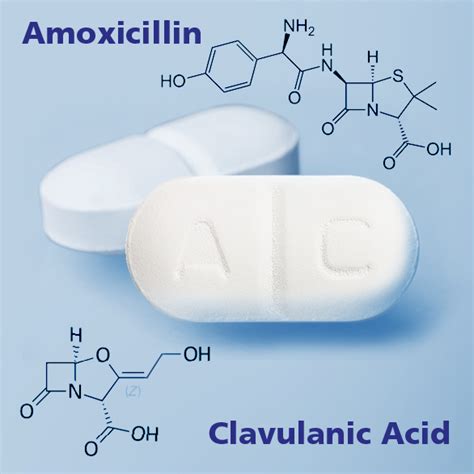Intro
Discover Amoxicillin Clavulanic Acid uses, a potent antibiotic combo treating bacterial infections, respiratory issues, and skin infections with clavulanate, augmentin, and antimicrobial properties.
The combination of amoxicillin and clavulanic acid is a widely used antibiotic that has been prescribed for decades to treat various bacterial infections. This potent duo is effective against a broad range of bacteria, including those that produce beta-lactamase, an enzyme that can make bacteria resistant to other antibiotics. In this article, we will delve into the uses of amoxicillin clavulanic acid, its benefits, and its working mechanisms.
The importance of understanding the uses of amoxicillin clavulanic acid cannot be overstated. With the rise of antibiotic resistance, it is crucial to use antibiotics judiciously and only when necessary. Amoxicillin clavulanic acid is a valuable tool in the fight against bacterial infections, and its proper use can help to reduce the risk of resistance and ensure that it remains effective for years to come. Whether you are a healthcare professional or a patient, it is essential to be aware of the uses and benefits of amoxicillin clavulanic acid.
Amoxicillin clavulanic acid is used to treat a variety of bacterial infections, including respiratory tract infections, skin and soft tissue infections, and urinary tract infections. It is also used to treat infections of the ear, nose, and throat, as well as infections of the bones and joints. The combination of amoxicillin and clavulanic acid is effective against a broad range of bacteria, including Streptococcus pneumoniae, Haemophilus influenzae, and Moraxella catarrhalis.
What is Amoxicillin Clavulanic Acid?

Benefits of Amoxicillin Clavulanic Acid
The benefits of amoxicillin clavulanic acid are numerous. It is effective against a broad range of bacteria, including those that produce beta-lactamase. It is also relatively safe and well-tolerated, with few side effects. Additionally, amoxicillin clavulanic acid is available in a variety of formulations, including tablets, capsules, and suspensions, making it easy to administer to patients of all ages.How Does Amoxicillin Clavulanic Acid Work?

Common Uses of Amoxicillin Clavulanic Acid
Amoxicillin clavulanic acid is commonly used to treat a variety of bacterial infections, including: * Respiratory tract infections, such as pneumonia and bronchitis * Skin and soft tissue infections, such as cellulitis and abscesses * Urinary tract infections, such as pyelonephritis and cystitis * Infections of the ear, nose, and throat, such as otitis media and sinusitis * Infections of the bones and joints, such as osteomyelitis and septic arthritisSide Effects of Amoxicillin Clavulanic Acid

Precautions and Contraindications
Amoxicillin clavulanic acid is contraindicated in patients with a history of hypersensitivity to penicillins or other beta-lactam antibiotics. It is also contraindicated in patients with severe renal impairment or hepatic dysfunction. Additionally, amoxicillin clavulanic acid should be used with caution in patients with a history of allergy or asthma.Dosage and Administration

Interactions with Other Medications
Amoxicillin clavulanic acid can interact with other medications, including: * Warfarin: Amoxicillin clavulanic acid can increase the risk of bleeding when used with warfarin. * Methotrexate: Amoxicillin clavulanic acid can increase the levels of methotrexate in the blood, increasing the risk of toxicity. * Probenecid: Amoxicillin clavulanic acid can decrease the levels of probenecid in the blood, reducing its effectiveness.Conclusion and Future Directions

As we move forward, it is crucial to continue monitoring the effectiveness of amoxicillin clavulanic acid and to develop new antibiotics to combat the growing threat of antibiotic resistance. Additionally, healthcare professionals and patients must work together to ensure that antibiotics are used responsibly and only when necessary.
We invite you to share your thoughts and experiences with amoxicillin clavulanic acid in the comments below. Have you used this antibiotic before? What were your experiences? Do you have any questions or concerns about amoxicillin clavulanic acid? We are here to help and look forward to hearing from you.
What is amoxicillin clavulanic acid used for?
+Amoxicillin clavulanic acid is used to treat various bacterial infections, including respiratory tract infections, skin and soft tissue infections, and urinary tract infections.
How does amoxicillin clavulanic acid work?
+Amoxicillin clavulanic acid works by inhibiting the growth of bacteria. Amoxicillin binds to the bacterial cell wall, preventing the bacteria from forming a proper cell wall and ultimately leading to the death of the bacteria. Clavulanic acid helps to prevent bacteria from becoming resistant to amoxicillin by inhibiting the production of beta-lactamase.
What are the common side effects of amoxicillin clavulanic acid?
+Common side effects of amoxicillin clavulanic acid include diarrhea, nausea and vomiting, abdominal pain, headache, rash, and itching.
Can amoxicillin clavulanic acid be used in patients with renal impairment?
+Amoxicillin clavulanic acid should be used with caution in patients with renal impairment. The dosage may need to be adjusted based on the patient's renal function.
Can amoxicillin clavulanic acid be used in patients with hepatic dysfunction?
+Amoxicillin clavulanic acid should be used with caution in patients with hepatic dysfunction. The dosage may need to be adjusted based on the patient's liver function.
